Table of Contents
The Afghan flag, also known as the flag of Afghanistan, holds deep historical and cultural significance for the country. It represents the identity, struggles, and aspirations of the people deeply connected with the culture of Afghanistan.
In this article, we will explore the intriguing aspects of the Afghanistan flag, including its design, symbolism, and historical background. Because we offer tours in Afghanistan, it’s important to have pages like this, so our clients and visitors can understand the history and symbolism behind this specific flag.
The Evolution of the Afghanistan Flag Throughout History
Afghanistan Flag: Colors and Symbolism
- The design of the flag of the Islamic Emirate of Afghanistan features a plain white field.
- The Islamic Shahada is prominently displayed in the center of the flag is the Shahada, the Islamic declaration of faith, written in black.
- The symbolism of the white color represents the purity of faith and the government of the Islamic Movement of Taliban.
- The adoption of the flag was on 15 August 2021, symbolizing the Taliban’s victory in the 2001-2021 war.
- The ideology of the flag reflects the ideology and values of the Islamic Emirate of Afghanistan, emphasizing its commitment to Islamic principles and governance.
Flag of Afghanistan

The flag of the Islamic Emirate of Afghanistan, currently flown under Taliban rule, carries significant symbolism reflecting the nation’s cultural resilience and Islamic principles. The design features a plain white field with the black Shahada, the Islamic declaration of faith, prominently displayed at the center. This flag represents the victory of the Taliban over the invasion by the USA and international troops, marking a new era for Afghanistan.
The white color of the flag symbolizes the purity of faith and governance embraced by the Islamic Movement of Taliban. The Shahada serves as a reminder of the nation’s strong Islamic identity and devotion to religious principles. The flag’s simplicity and focus on faith highlight the Taliban’s commitment to an Islamic state.
With its distinct design, the flag distinguishes itself from the banners of other jihadist groups, showcasing the unique path and objectives of the Islamic Emirate of Afghanistan. As a powerful symbol of the nation, this flag reflects the triumph of the Taliban and their vision for Afghanistan’s future as an Islamic state governed by their interpretation of Islamic law.
The history of the flag is intertwined with the country’s turbulent past, marked by numerous changes and conflicts. Its reinstatement signifies a turning point in Afghanistan’s history, emphasizing the rise of the Taliban and their control over the country. The flag stands as a testament to the resilience and determination of the Afghan people in the face of adversity. It is now safe and opportune to embark on an Afghanistan tour, witnessing firsthand the significant historical changes taking place in the country.
While the flag represents a new chapter for Afghanistan, its symbolism and significance continue to evolve under Taliban rule. It serves as a visual representation of the country’s cultural identity and Islamic values, reflecting the aspirations and governance principles of the Islamic Emirate of Afghanistan.
Historical Background
Afghanistan has a rich history of using various national flags throughout different periods. We will delve into the evolution of the Afghanistan flag and its changing symbolism over time. From the tricolor flags to the current Islamic Emirate flag, each iteration reflects the country’s unique journey.
Flag of Afghanistan Timelapse
The Islamic Emirate of Afghanistan Flag
The Islamic Emirate of Afghanistan flag, also used by the Taliban, features a white field with a black Shahada. We will examine the design and adoption of this flag, exploring its significance in the context of Afghanistan’s recent history. The symbolism of the Shahada and its representation of the Islamic faith will be discussed.
The current symbolism of the Islamic Emirate of Afghanistan flag will be explored, including its meaning as a representation of purity of faith and government. Additionally, we will discuss how tricolor flags continue to serve as symbols of resistance and hope for many Afghans both inside and outside the country.
International Recognition and Diplomatic Usage
Despite the overthrow of the Islamic Republic, tricolor flags remain in use by most diplomatic missions in Afghanistan. We will discuss the importance of tricolor flags in diplomatic settings and their role in representing Afghanistan internationally. The removal of the tricolor flag and the reinstatement of the Islamic Emirate flag have sparked protests and controversy.
Incorporating the Islamic Shahada
Several flags incorporate the Islamic Shahada or the Islamic Takbir, which is the declaration of faith in Islam. Here are some examples:


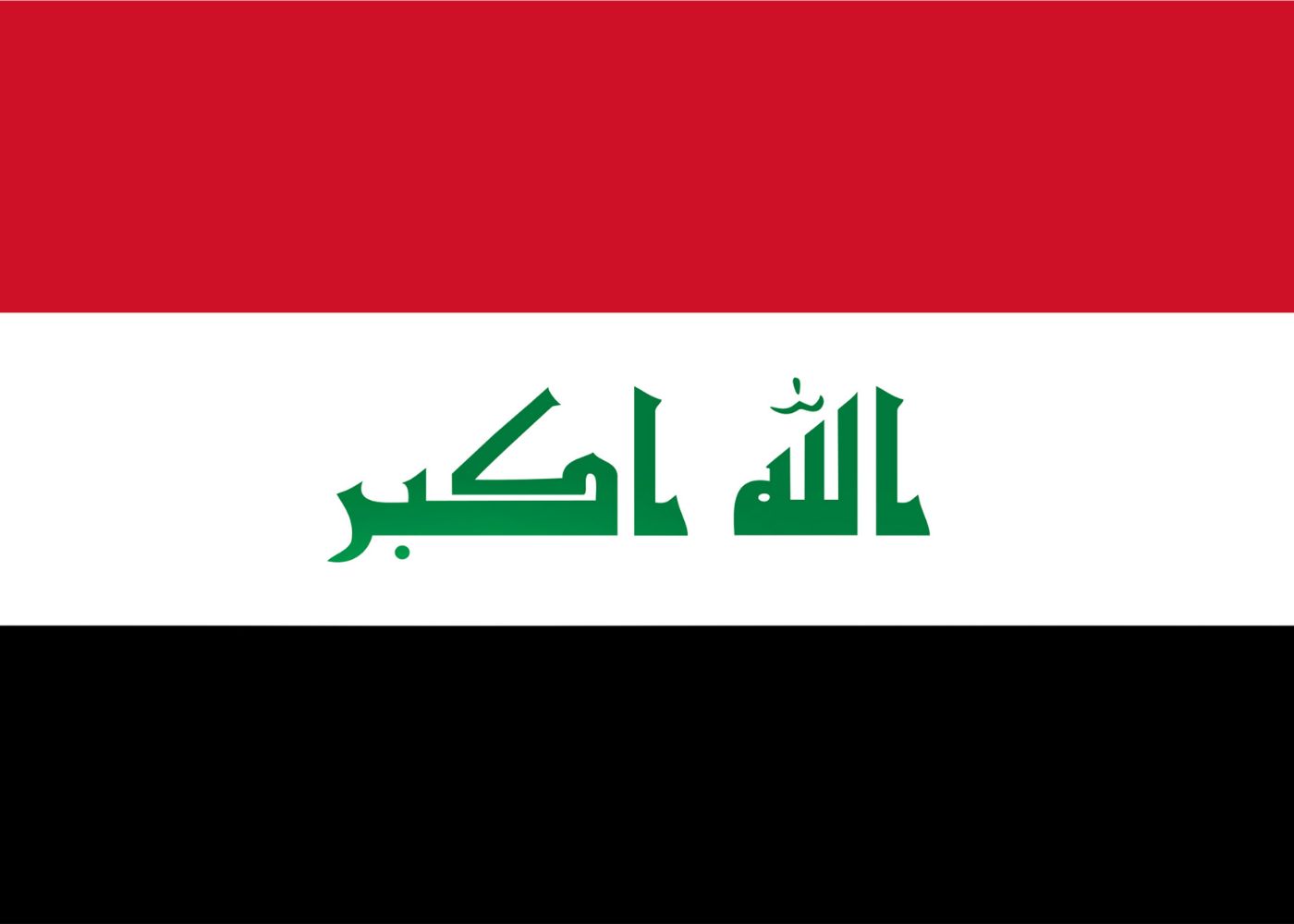
Tricolor Flags: The Islamic Republic of Afghanistan
The tricolor flags of the Islamic Republic of Afghanistan have played a significant role in the country’s recent past. We will explore the design and adoption of these tricolor flags, focusing on their symbolism and representation of history, progress, and hope for the future.
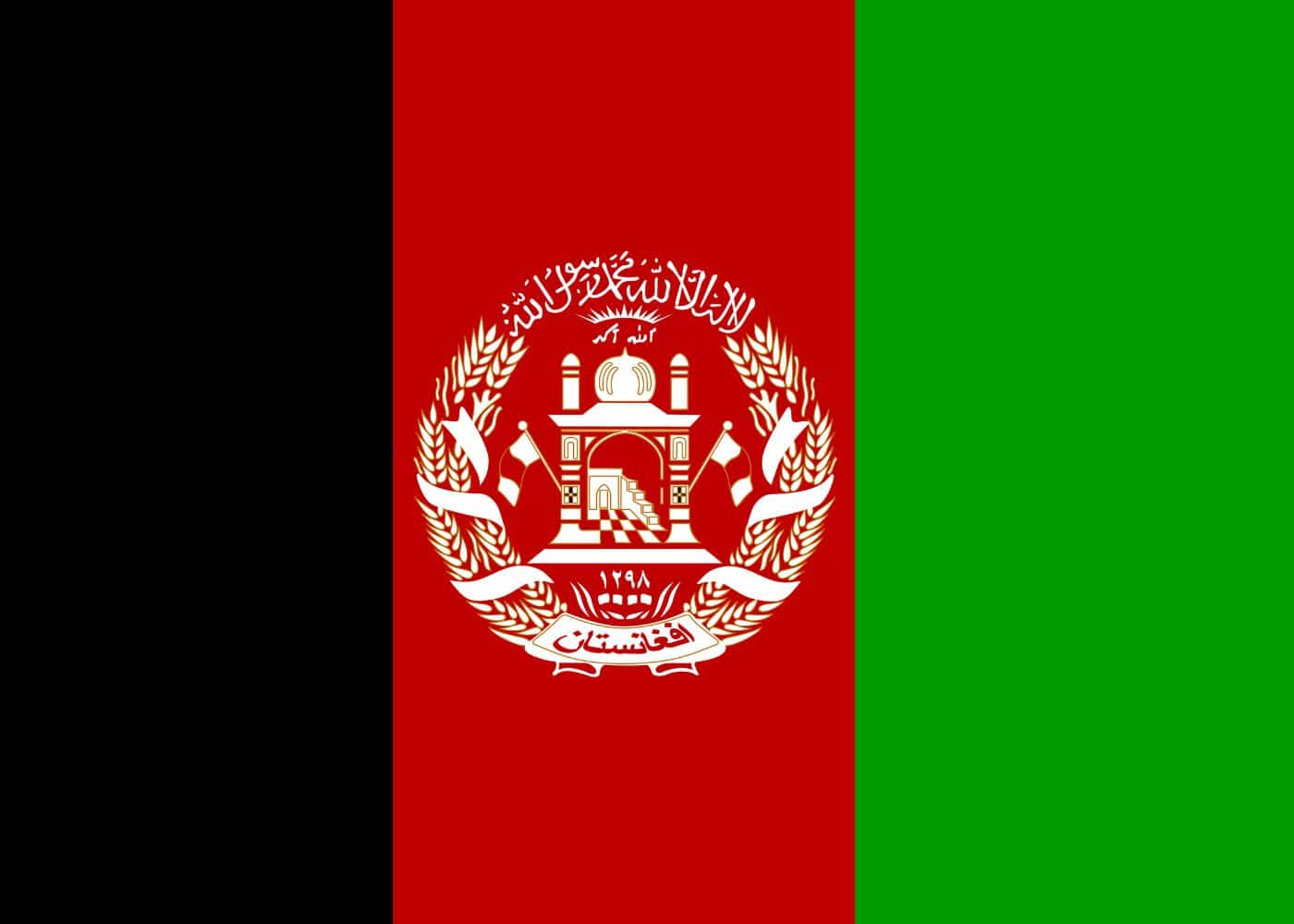
Afghanistan’s tricolor flags have undergone transformations throughout the years. We will uncover the inspiration and influences behind the tricolor design, including the role of Afghan King Amanullah Khan. The evolution and modifications of the tricolor flags will be examined in detail.
National Flag Etiquette
Respecting the proper usage and display of the flag of the Islamic Emirate of Afghanistan is of utmost importance. Understanding flag etiquette is essential, especially during national events and ceremonies. Here are guidelines to honor the flag and demonstrate proper protocol:
- Proper Handling: The flag should be handled with care and respect. It should not be allowed to touch the ground or floor and should be held upright and not dragged.
- Hoisting and Lowering: When hoisting the flag, it should be done briskly, and when lowering, it should be done ceremoniously. The flag is typically hoisted at sunrise and lowered at sunset, although specific guidelines or occasions may dictate variations.
- Displaying the Flag: When displaying the flag vertically, ensure that the Shahada, the Islamic declaration of faith, is centered and upright. The flag should be flown freely without being entangled or obstructed.
- Half-Staff: Lowering the flag to half-staff is a gesture of mourning or respect. It is done on specific days of remembrance or as directed by authorities to honor national tragedies or the passing of significant figures.
- Flag Retirement: When the flag becomes damaged, torn, or worn out, it should be retired in a dignified manner. Proper guidelines and local regulations should be followed for respectful disposal, which may include burning the flag in a solemn ceremony.
- Flag Size and Placement: The size of the flag displayed should be proportionate to the size of the flagpole or display area. It is recommended to consult local guidelines or authorities for specific rules regarding flag size and placement.
- Respectful Disposal: If the flag cannot be retired through burning, it should be disposed of in a respectful manner. This can involve burying it or handing it over to authorized organizations that specialize in flag disposal.
- Official Settings: The Islamic Emirate of Afghanistan requires the use of its flag in all official settings. It is important to adhere to this requirement and display the flag appropriately during official functions, ceremonies, and government buildings.
By following these guidelines, individuals and organizations can demonstrate respect for the flag of the Islamic Emirate of Afghanistan and uphold proper flag etiquette, reflecting the values and principles of the nation.
Interesting Facts

Embark on a journey of fascinating facts and lesser-known trivia about the Afghan flag from the Islamic Emirate of Afghanistan. Discover unique features within the flag’s design that hold hidden symbolism. Uncover stories of famous incidents or events involving the flag that have left an indelible mark on the nation’s history and identity.
History
- 1997: The initial adoption of the flag occurred on 27 October 1997, during the first establishment of the Islamic Emirate of Afghanistan.
- 2021: The flag was reinstated on 15 August 2021, following the victory of the Taliban and their subsequent takeover of Afghanistan.
- Shahada: The black Shahada, the Islamic declaration of faith, occupies the center of the flag, symbolizing the core principles and values of Islam that guide the nation.
- Symbol of Victory: The flag represents the triumph of the Taliban over foreign invasion and their vision of establishing an Islamic state in Afghanistan.
- Resilience and Change: The flag’s recent reinstatement reflects the shifting political landscape and the resurgence of the Taliban, signifying a new chapter in Afghanistan’s history.
Flag-Related Symbols and Emblems
The Afghan flag from the Islamic Emirate of Afghanistan carries deep symbolic meanings beyond its design. Explore additional symbols and emblems closely associated with Afghanistan, understanding their significance and how they relate to the flag. Delve into their historical and cultural roots, further enriching your understanding of Afghanistan’s heritage.
Symbolisms of the Afghan Flag
The flag of Afghanistan holds several symbolic elements that represent the nation’s history, values, and aspirations. Here are the symbolisms of the Afghan flag presented in itemized form:
- White Color: Represents purity of faith, reflecting the adherence to Islamic principles and values.
- Black Shahada: Occupying the center, it symbolizes the core declaration of faith in Islam and the nation’s commitment to the principles of the religion.
- Simplicity: The minimalistic design reflects the Islamic Emirate’s focus on the fundamental teachings of Islam and the rejection of excess.
- Islamic Emirate of Afghanistan: The inscription in Pashto at the bottom of the flag represents the name of the ruling entity, signifying its authority and governance based on Islamic principles.
- Historical Legacy: The flag embodies the resilience and struggle of the Afghan people against foreign invasion and their desire for self-determination.
- National Identity: The flag serves as a powerful symbol that unifies the Afghan people, reminding them of their shared religious and cultural heritage.
- National Aspirations: Through its design and elements, the flag represents the aspirations of the Islamic Emirate of Afghanistan, including the establishment of an Islamic state and the protection of Islamic values and principles.
These symbolisms in the flag contribute to the country’s sense of identity and pride, reflecting its historical journey and cultural significance.
Flags of Similar Countries
Examining the flags of neighboring countries or regions can provide intriguing insights. Compare and contrast the flags, exploring similarities in design, colors, or symbolism. Uncover historical and cultural connections between flags, shedding light on shared influences or distinctive identities.
Afghan Flag vs Pakistan Flag

Similarity: Both flags feature a white field, representing purity, along with Islamic symbolism.
Difference: The Pakistan flag incorporates a green crescent and star, symbolizing Islam, while the Afghan flag focuses on the black Shahada.
Afghan Flag vs Saudi Arabian Flag
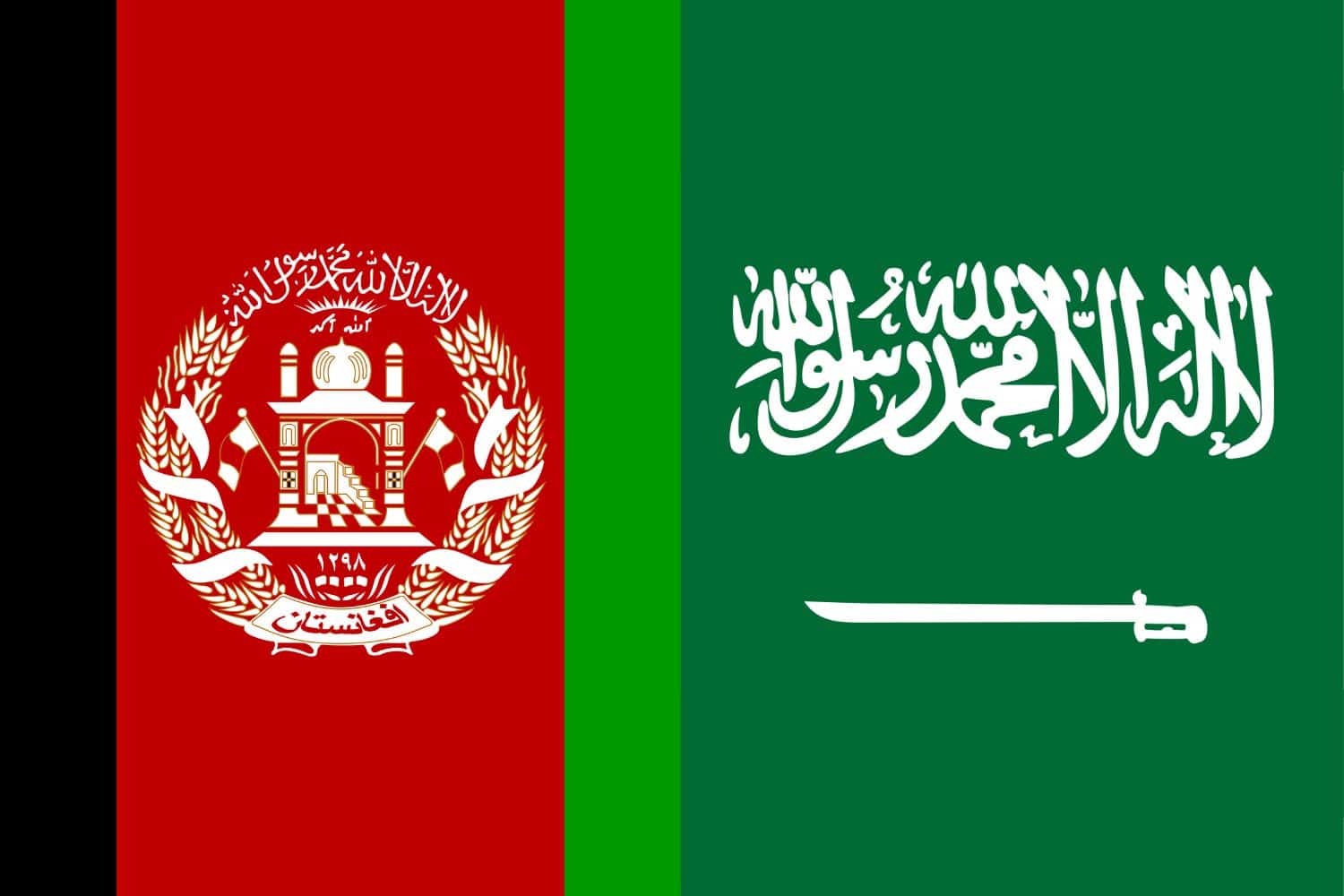
Similarity: Both flags feature a simple design with an inscription in Arabic centered on a plain background.
Difference: The Saudi Arabian flag includes a green field and the Shahada, while the Afghan flag has a white field with the black Shahada.
Afghan Flag vs Iranian Flag
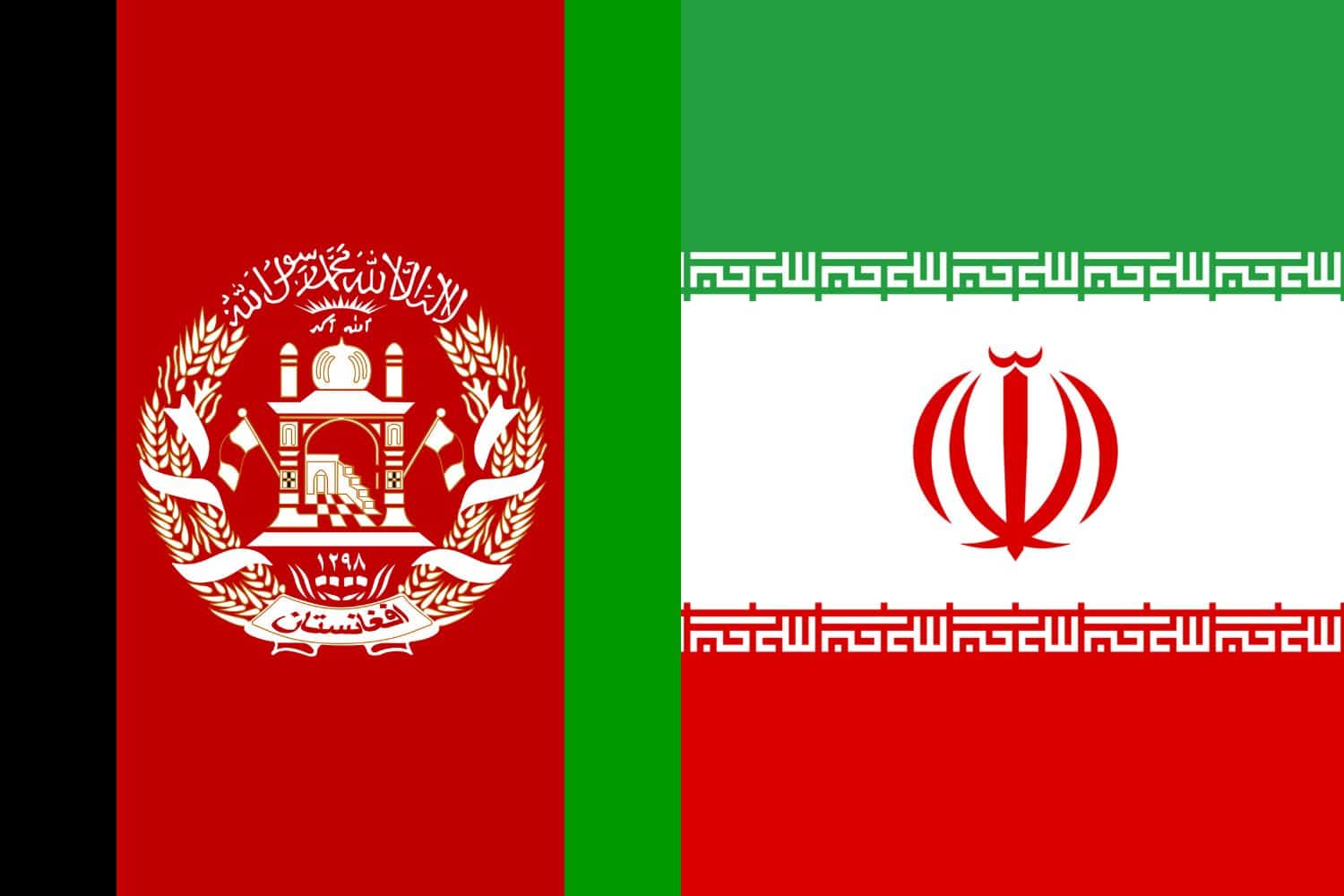
Similarity: Both flags incorporate Islamic symbolism and inscriptions in the Persian language.
Difference: The Iranian flag includes a green, white, and red tricolor design, while the Afghan flag consists of a white field with the black Shahada.
Afghan Flag vs United Arab Emirates Flag

Similarity: Both flags feature simple designs with inscriptions in Arabic.
Difference: The United Arab Emirates flag includes a vertical red stripe, while the Afghan flag has a plain white field with the black Shahada.
Afghan Flag vs Qatar Flag
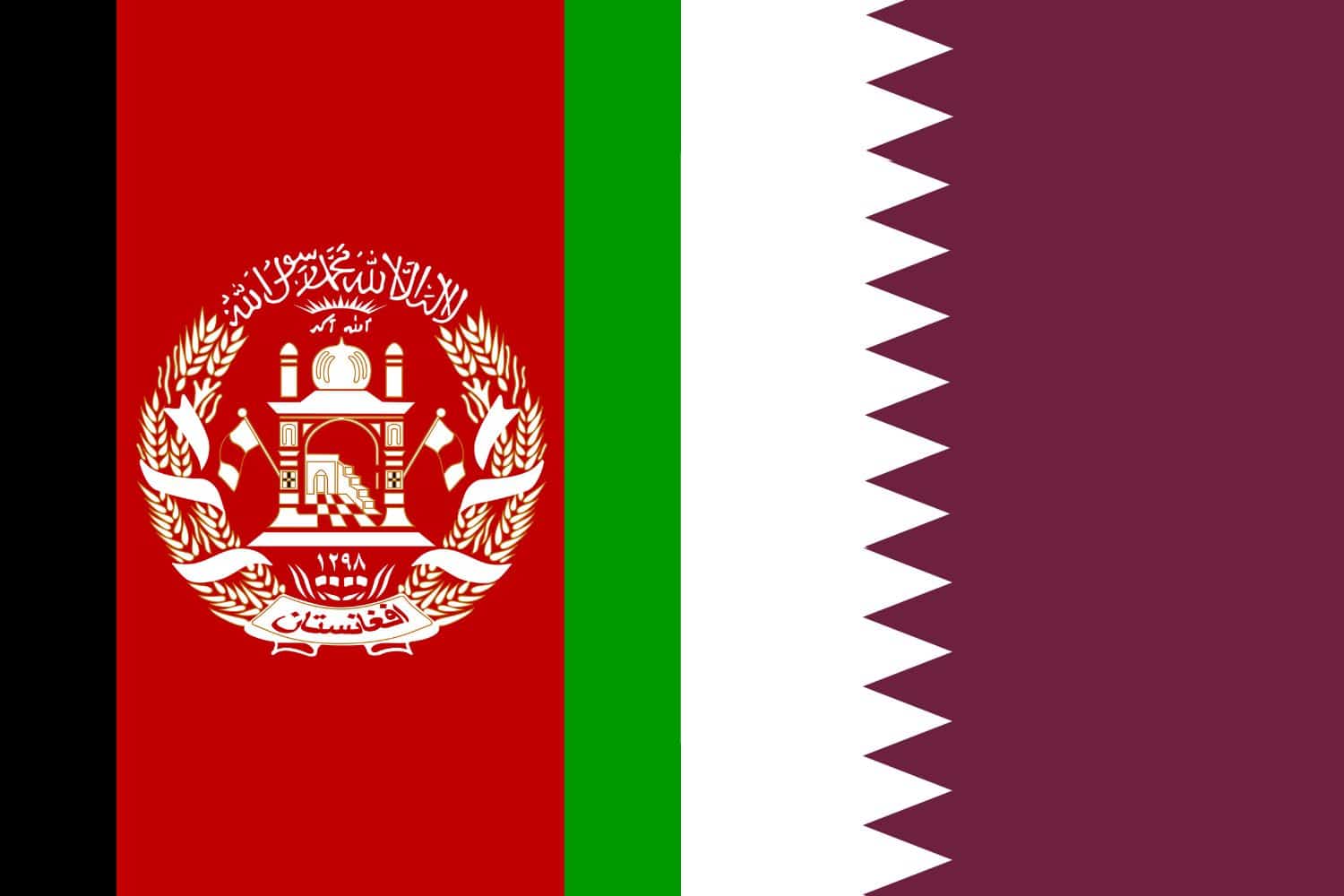
Similarity: Both flags incorporate Islamic symbolism and inscriptions in Arabic.
Difference: The Qatar flag includes a maroon field with a serrated edge, while the Afghan flag consists of a white field with the black Shahada.
Frequently Asked Questions (FAQs)
Discover answers to common questions related to the Afghan flag from the Islamic Emirate of Afghanistan. From its historical origins to the symbolism behind its elements, find concise and informative responses that address inquiries commonly posed by those curious about Afghanistan’s flag.
What does the black Shahada on the Afghan flag represent?
The black Shahada on the Afghan flag represents the core declaration of faith in Islam, affirming the oneness of Allah and the status of Muhammad as his prophet. It serves as a symbol of the country’s strong Islamic identity and adherence to Islamic principles.
Why is the Afghan flag predominantly white?
The predominantly white color of the Afghan flag symbolizes the purity of faith and the government of the Islamic Emirate of Afghanistan. It reflects the emphasis on moral values, righteousness, and adherence to Islamic teachings.
When was the current Afghan flag adopted?
The current Afghan flag, representing the Islamic Emirate of Afghanistan, was adopted on 15 August 2021 following the Taliban’s victory and their establishment of governance in the country.
What is the significance of the Islamic Emirate of Afghanistan inscription on the flag?
The inscription in Pashto at the bottom of the Afghan flag, stating “Islamic Emirate of Afghanistan,” signifies the name of the ruling entity. It represents the authority and governance based on Islamic principles as envisioned by the Taliban.
Has the design of the Afghan flag changed over time?
The design of the Afghan flag has undergone changes throughout the country’s history. However, the current design with the black Shahada on a white field is specific to the Islamic Emirate of Afghanistan and was reinstated in 2021.
How does the Afghan flag reflect the aspirations of the Islamic Emirate?
The Afghan flag reflects the aspirations of the Islamic Emirate by emphasizing the significance of Islamic principles in governance and society. It symbolizes the desire to establish an Islamic state and protect Islamic values and principles in Afghanistan.
What is the historical significance of the Afghan flag’s reinstatement in 2021?
The reinstatement of the Afghan flag in 2021 represents the Taliban’s resurgence and their reclaiming of power in Afghanistan. It marks a shift in the country’s political landscape and signifies the return of the Islamic Emirate.
Can the Afghan flag be flown by individuals or organizations?
The Afghan flag is primarily used as the national flag and ensign of the Islamic Emirate of Afghanistan. While it is not restricted to governmental use, it is typically associated with official and state-related functions.
Are there any regulations or protocols regarding the display of the Afghan flag?
As the flag of the Islamic Emirate of Afghanistan, specific regulations and protocols may be in place for its display. These regulations may dictate proper handling, placement, and respect for the flag, following cultural and religious sensitivities.
How is the Afghan flag viewed by different factions within Afghanistan?
The Afghan flag, particularly from the Islamic Emirate of Afghanistan, may be viewed differently by different factions within the country. Some may embrace it as a symbol of religious identity and national unity, while others may have reservations or opposing views based on political or ideological differences.
